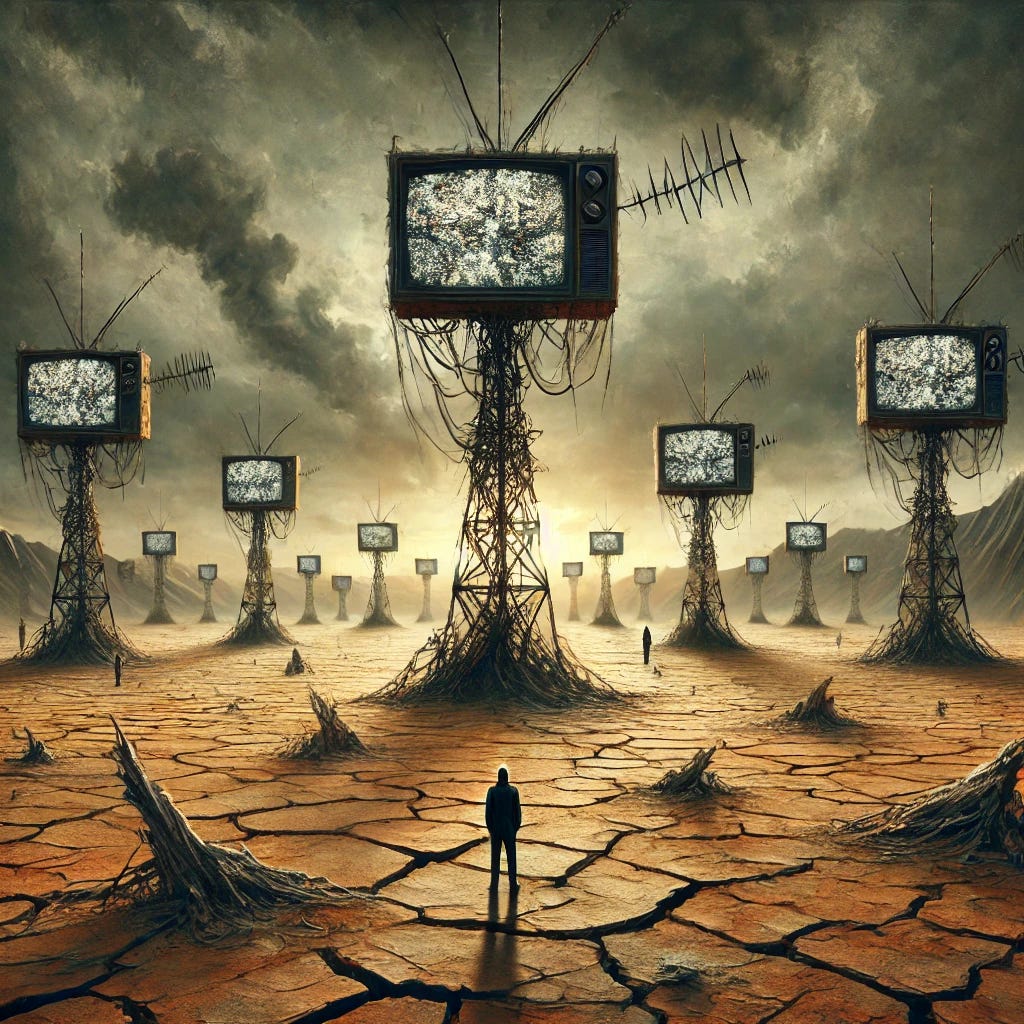The Post-Mr. Beast Era and The YouTube New Wave
Signs the Online Dopamine Carousel is Coming to a Crashing Halt
In his keynote at South by Southwest a few months ago, Patreon CEO Jack Conte asked the audience, “If you went back in time and asked David Bowie, ‘What do you want? What’s your goal as an artist?’ Do you think Bowie would have said ‘My goal as an artist is to maximize the amount of human hours consuming my work?’”
It was a rhetorical question. Conte paused for a good while and let the question sink in.
In short, Conte was lamenting the state of online creator culture. He was urging creators to pivot away from trying to maximize reach and engagement, and instead to build a smaller, but stronger fanbase.
He used a good analogy for two different business models: selling hot dogs under the Eiffel Tower (massive churn, massive consumer base, mediocre product) vs a more obscure local restaurant (repeat customers, smaller consumer base, and outstanding product/service).
I feel Conte was also echoing something I’m seeing across many media channels, i.e. a recognition that more and more “consumer mindshare” (what an awful Orwellian phrase) is being drawn away from traditional media including linear TV, film, and streaming, and toward social media and YouTube.
I’ve touched on this trend in a past post, exploring how creators and artists who live on tech platforms like IG and YouTube have aligned their creative agenda with these platforms. If a platform dictated that likes, shares, watch hours, and audience retention made a piece of content successful, then creatives would adopt those metrics for success. We’ve watched this happen. Again, imagine Bowie watching his like count like a hawk.
This model of maximizing engagement and watch hours is toxic for many obvious reasons. And toxic is the perfect word. If we’re in an attention ecosystem, then creators like Mr. Beast who create videos and posts with sticky hooks and “binge loops” are basically mass polluters. They cash in at the expense of our agency and attention, like an attention economy BP leaking millions of barrels of crude oil into our attention ocean.
This post merits a longer analysis of our attention economy, equipped with graphs and charts to drive the point home. But for the sake of time, let me share a simpler chart:
This graphic comes from an article by Ted Gioia in which he argues that the entertainment industry is dying as we are moving out of slower mediums into an entertainment economy based on distraction and now increasingly, on addiction.
Gioia writes:
The tech platforms aren’t like the Medici in Florence, or those other rich patrons of the arts. They don’t want to find the next Michelangelo or Mozart. They want to create a world of junkies—because they will be the dealers.
Addiction is the goal.
They don’t say it openly, but they don’t need to. Just look at what they do.
Everything is designed to lock users into an addictive cycle.
When I was considering putting videos up on YouTube and finding my own niche on the platform, I did some deep research. What I found was a cornucopia of content telling me exactly what strategies to use to hook viewers and encouraging me to put them on a “binge loop.” This included more innocuous things like dropping little references to your other videos on your channel to less innocuous things like ending your videos super prematurely so that viewers don’t have a chance to anticipate the ending and click away. As a creator, I would try to beat their eyeballs and mouses.
More generally, the Mr. Beast-style videos online are cut so fast in order to keep you watching from the very first second. It’s basically a kind of hypnosis.
Of course, filmmakers and editors have always been keen to understand how audiences watch films and where their eyes move on a screen, but YouTubers like Mr. Beast have taken this to the next level, doing things like A B testing thumbnails for the best performers. It seems innocent enough until you realize that every ounce of our attention along the content funnel, from thumbnail to binge loop, is strategized over and methodically conquered.
But there is hope. I’ve recently discovered a movement online called the YouTube New Wave that makes it a point to create slower, more personal, and more meaningful content. These creators are young, in their early 20s mostly, and they are hungry for a new kind of authenticity online.
Their content is less about views and clicks and more about connection and meaningful engagement. These kinds of movements may be the salve we need in a desperate time in the media landscape.
The traditional Hollywood system has been losing ground to social media. “Second screens” are becoming more important as primary entertainment devices. Scott Galloway, in a scathing podcast with Matthew Belloni, recommended that every creative under 40 pivot to smaller screens and abandon the classic Hollywood entertainment ladder.
This is happening at the same time that Surgeon General Vivek Murthy is calling for a warning label on social media because of its harmful effects on teenage mental health. The lead doctor in our nation is comparing our social media to cigarettes.
So it’s clear our dopamine systems are being abused and that our attention is being conditioned into more and more fragmented consumption. But social media and YouTube are also the future.
I think it’s time we look to new creators and to new values that could shape a better internet and a better media ecosystem that respects our time, and more importantly, REWARDS our attention.
I know this will be a topic I come back to so I’ll leave it here.





